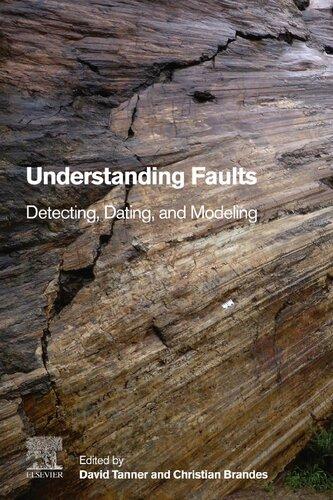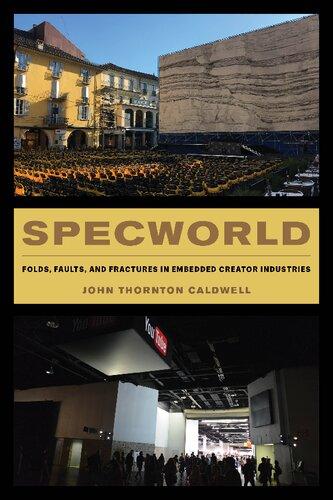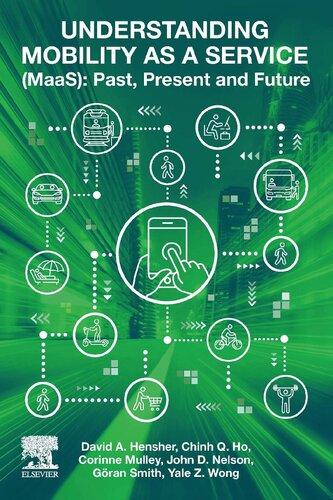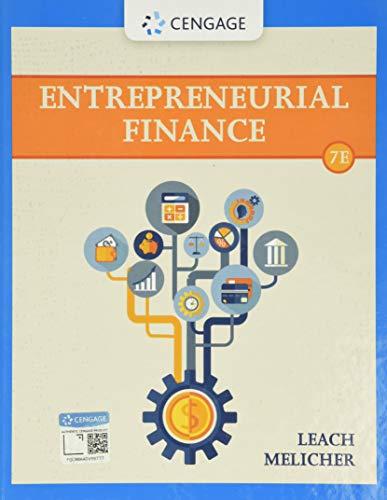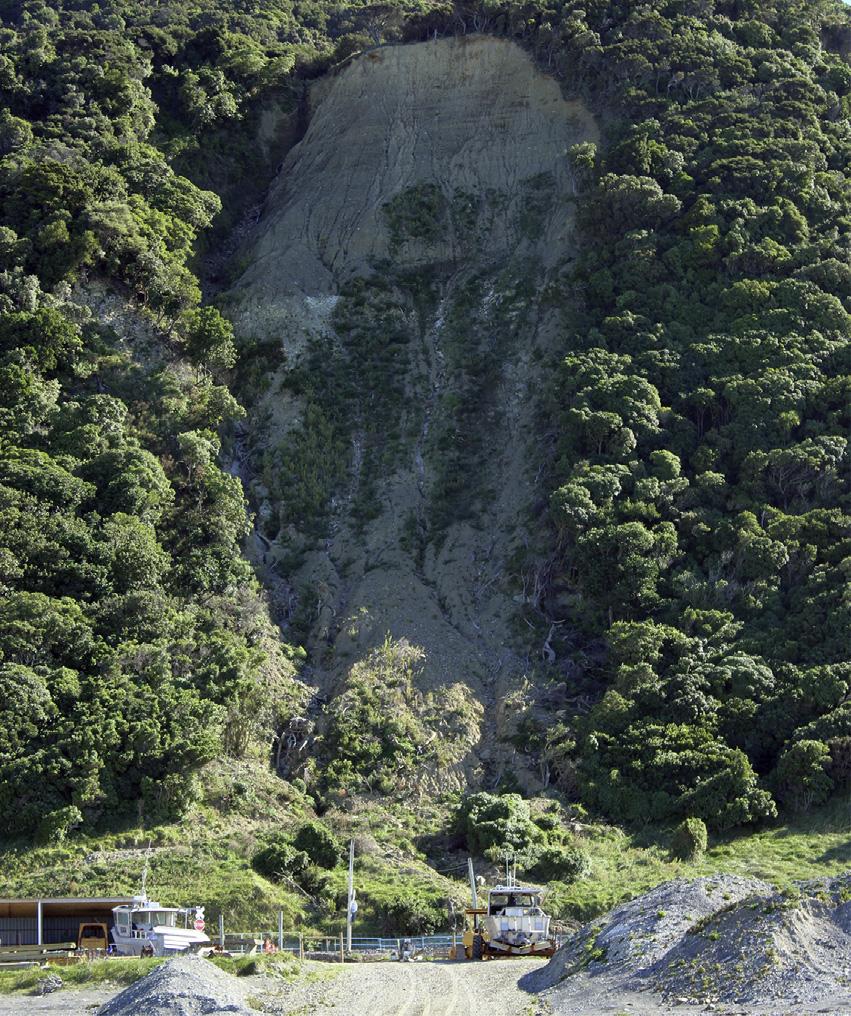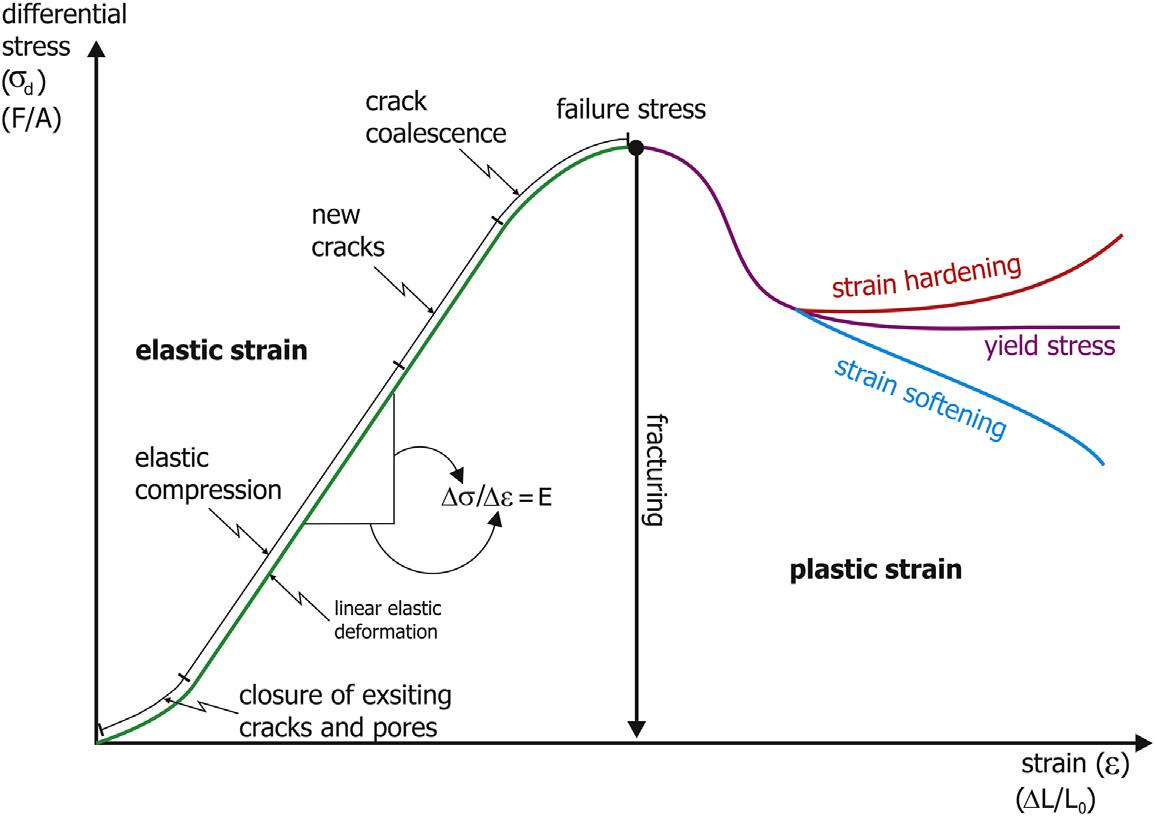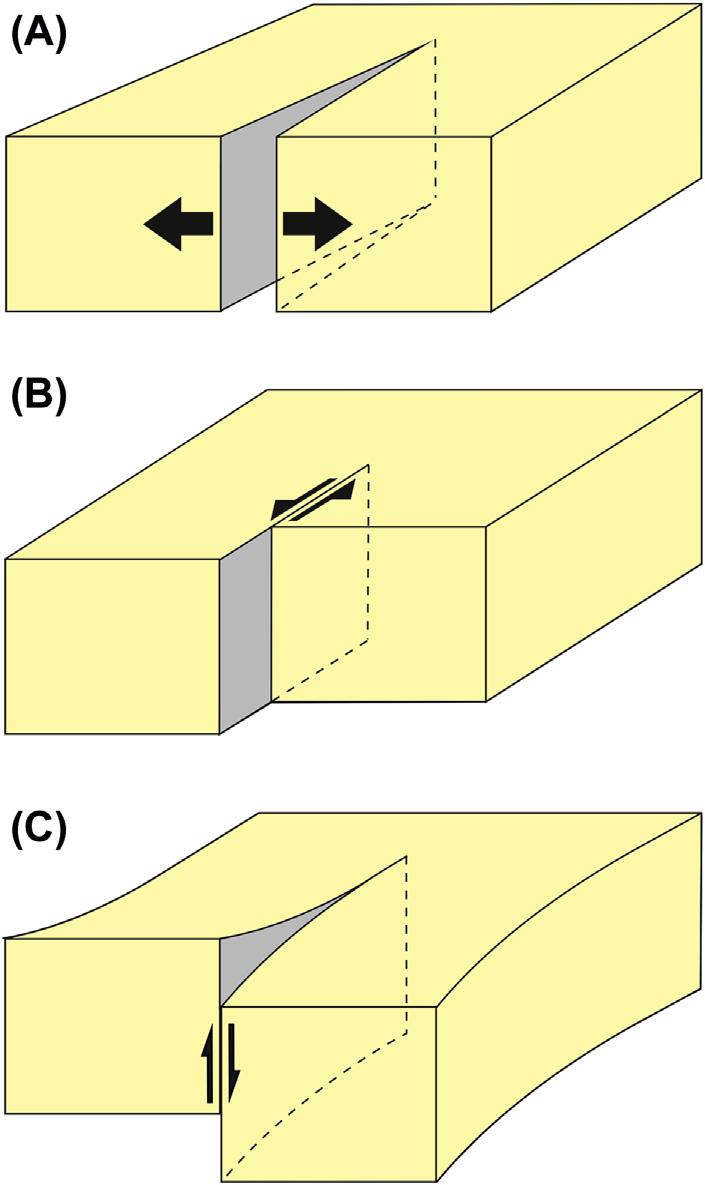https://ebookmass.com/product/understanding-faults-
Instant digital products (PDF, ePub, MOBI) ready for you
Download now and discover formats that fit your needs...
Specworld: Folds, Faults, and Fractures in Embedded Creator Industries 1st Edition John Thornton Caldwell
https://ebookmass.com/product/specworld-folds-faults-and-fractures-inembedded-creator-industries-1st-edition-john-thornton-caldwell/ ebookmass.com
Men, Masculinity and Contemporary Dating 1st ed. Edition Chris Haywood
https://ebookmass.com/product/men-masculinity-and-contemporarydating-1st-ed-edition-chris-haywood/
ebookmass.com
Understanding Mobility as a Service (MaaS): Past, Present and Future 1st Edition David A. Hensher
https://ebookmass.com/product/understanding-mobility-as-a-servicemaas-past-present-and-future-1st-edition-david-a-hensher/ ebookmass.com
Superletras 4º. Guía Maestro. Hogar, verde hogar (Libro 02) (Tekman Books) (Z-Library) Desconocido
https://ebookmass.com/product/superletras-4o-guia-maestro-hogar-verdehogar-libro-02-tekman-books-z-library-desconocido/ ebookmass.com
The Expansion Sale: Four Must-Win Conversations to Keep and Grow Your Customers Erik Peterson
https://ebookmass.com/product/the-expansion-sale-four-must-winconversations-to-keep-and-grow-your-customers-erik-peterson/
ebookmass.com
Williams Hematology 10th Edition Kenneth Kaushansky
https://ebookmass.com/product/williams-hematology-10th-editionkenneth-kaushansky/
ebookmass.com
Chocolate, Politics and Peace-Building: An Ethnography of the Peace Community of San José de Apartadó, Colombia 1st Edition Gwen Burnyeat (Auth.)
https://ebookmass.com/product/chocolate-politics-and-peace-buildingan-ethnography-of-the-peace-community-of-san-jose-de-apartadocolombia-1st-edition-gwen-burnyeat-auth/ ebookmass.com
Essential Clinical Procedures 4th Edition Richard Dehn
https://ebookmass.com/product/essential-clinical-procedures-4thedition-richard-dehn/
ebookmass.com
The New Era of Real Estate: An Analysis of Business Models in the Proptech Industry Gianluca Mattarocci
https://ebookmass.com/product/the-new-era-of-real-estate-an-analysisof-business-models-in-the-proptech-industry-gianluca-mattarocci/
ebookmass.com
Entrepreneurial Finance 7th Edition J. Chris Leach https://ebookmass.com/product/entrepreneurial-finance-7th-edition-jchris-leach/
ebookmass.com
UnderstandingFaults Detecting,Dating,andModeling Editedby DavidTanner
ChristianBrandes
Elsevier
Radarweg29,POBox211,1000AEAmsterdam,Netherlands TheBoulevard,LangfordLane,Kidlington,OxfordOX51GB,UnitedKingdom 50HampshireStreet,5thFloor,Cambridge,MA02139,UnitedStates
Copyright©2020ElsevierInc.Allrightsreserved.
Nopartofthispublicationmaybereproducedortransmittedinanyformorbyanymeans, electronicormechanical,includingphotocopying,recording,oranyinformationstorage andretrievalsystem,withoutpermissioninwritingfromthepublisher.Detailsonhowto seekpermission,furtherinformationaboutthePublisher’spermissionspoliciesandour arrangementswithorganizationssuchastheCopyrightClearanceCenterandtheCopyright LicensingAgency,canbefoundatourwebsite: www.elsevier.com/permissions .
Thisbookandtheindividualcontributionscontainedinitareprotectedundercopyrightby thePublisher(otherthanasmaybenotedherein).
Notices Knowledgeandbestpracticeinthis fieldareconstantlychanging.Asnewresearchand experiencebroadenourunderstanding,changesinresearchmethods,professional practices,ormedicaltreatmentmaybecomenecessary.
Practitionersandresearchersmustalwaysrelyontheirownexperienceandknowledgein evaluatingandusinganyinformation,methods,compounds,orexperimentsdescribed herein.Inusingsuchinformationormethodstheyshouldbemindfuloftheirownsafety andthesafetyofothers,includingpartiesforwhomtheyhaveaprofessionalresponsibility.
Tothefullestextentofthelaw,neitherthePublishernortheauthors,contributors,or editors,assumeanyliabilityforanyinjuryand/ordamagetopersonsorpropertyasamatter ofproductsliability,negligenceorotherwise,orfromanyuseoroperationofanymethods, products,instructions,orideascontainedinthematerialherein.
LibraryofCongressCataloging-in-PublicationData
AcatalogrecordforthisbookisavailablefromtheLibraryofCongress
BritishLibraryCataloguing-in-PublicationData
AcataloguerecordforthisbookisavailablefromtheBritishLibrary
ISBN:978-0-12-815985-9
ForinformationonallElsevierpublicationsvisitour websiteat https://www.elsevier.com/books-and-journals
Publisher: CandiceJanco
AcquisitionEditor: AmyShapiro
EditorialProjectManager: SaraValentino
ProductionProjectManager: OmerMukthar
CoverDesigner: GregHarris
TypesetbyTNQTechnologies
Listofcontributors ChristianBrandes,Institutfu ¨ rGeologie,LeibnizUniversita ¨ tHannover,Hannover, Germany
HermannBuness,LeibnizInstituteforAppliedGeophysics(LIAG),Hannover, Germany
ConradChilds,FaultAnalysisGroup,SchoolofGeologicalSciences,UCD,Dublin, Ireland
A ˚ keFagereng,SchoolofEarth&OceanSciences,CardiffUniversity,Cardiff,United Kingdom
GeraldGabriel,LeibnizInstituteforAppliedGeophysics(LIAG),Hannover, Germany
NicolaiGestermann,FederalInstituteforGeosciencesandNaturalResources, Hannover,Germany
ThomasGunther,LeibnizInstituteforAppliedGeophysics(LIAG),Hannover, Germany
AndreasHenk,InstituteofAppliedGeosciences,TechnicalUniversityDarmstadt, Darmstadt,Germany
JanIgel,LeibnizInstituteforAppliedGeophysics(LIAG),Hannover,Germany
MattIkari,MARUM CenterforMarineEnvironmentalSciencesandFacultyof Geosciences,UniversityofBremen,Bremen,Germany
MichaelKettermann,DepartmentofGeodynamicsandSedimentology,Universityof Vienna,Vienna,Austria
TomManzocchi,FaultAnalysisGroup,SchoolofGeologicalSciences,UCD,Dublin, Ireland
ChristopherK.Morley,DepartmentofGeologicalSciences,FacultyofScience, ChiangMaiUniversity,ChiangMai,Thailand
AndrewNicol,DepartmentofGeologicalSciences,UniversityofCanterbury,Christchurch,NewZealand
StefanNielsen,DepartmentofEarthSciences,DurhamUniversity,Durham,United Kingdom
Andre ´ Niemeijer,DepartmentofGeoscience,UtrechtUniversity,Utrecht,The Netherlands
ThomasPlenefisch,FederalInstituteforGeosciencesandNaturalResources, Hannover,Germany
Listofcontributors
PeterSkiba,LeibnizInstituteforAppliedGeophysics(LIAG),Hannover,Germany
LucaSmeraglia,DipartimentodiScienzedellaTerra,SapienzaUniversityofRome, Rome,Italy
TakahiroTagami,DivisionofEarthandPlanetarySciences,GraduateSchoolof Science,KyotoUniversity,Kyoto,Japan
DavidC.Tanner,LeibnizInstituteforAppliedGeophysics(LIAG),Hannover, Germany
SumikoTsukamoto,LeibnizInstituteforAppliedGeophysics(LIAG),Hannover, Germany
ChristophvonHagke,InstituteofGeology&Palaeontology,RWTHAachenUniversity,Aachen,Germany
JohnWalsh,FaultAnalysisGroup,SchoolofGeologicalSciences,UCD,Dublin, Ireland
ThomasR.Walter,GFZGermanResearchCentreforGeosciences,Potsdam, Germany
ErnstWillingshofer,DepartmentofEarthSciences,UtrechtUniversity,Utrecht,The Netherlands
HorstZwingmann,DepartmentofGeologyandMineralogy,FacultyofScience, KyotoUniversity,Kyoto,Japan
Preface Thisbookistheaccumulationofmanyyearsofresearchonfaultsandrepresents ourownpersonalviewsofthestateoftheartinfaultanalysis.Someyearsago, werecognisedthat,althoughdifferentbranchesofgeoscienceallregardfaults andtheprocessesoffaultingasimportant,eachgrouphasitsownmethodsand theories.Consequently,abookthatfocusesonallaspectsoffaultswasmissing onthemarket.
Wehadtwoaimswhencompilingthisbook.First,wewantedtoprovidea holisticviewonallfacetsoffaulting,withafocusonfaultprocessesandfault detection.Second,thisbookpresentsatransdisciplinaryapproachthatunitesthe differentgeosciencesub-disciplinesthatareconcernedwithfaults,inparticular showingtheadvantagesofcombiningthemethods.Forinstance,itisimportant toconnectthewayfaultsaretreatedinstructuralgeologywithseismological methodsoffaultanalysis.Webelievethatthisholistictreatmentisthekeyto understandfaults,andtodevelopadvancedpredictivefaultmodels.Wehave attemptedtokeepthestyleofthebooksothatstudentsfromanygeo-relevant backgroundcanreadit.Nevertheless,wealsotriedreachalevelbetweentextbookandresearcharticletomakethebookinterestingfortheadvancedreader.In addition,forreasonsofbrevity,somechaptersareshorterthanwewouldlike; thereforewemadeanefforttocitethebackgroundandadvancedreadinginthese subjects.
Discussionwithmanycolleagueshasshapedthebook.Inadditiontothe authorsinthebook,theyinclude;PeterEichhubl,BobHoldsworth,Catherine Homberg,ChristopherA.-L.Jackson,Ru ¨ digerKillian,CharlotteM.Krawczyk, KatharinaMuller,AnnePluymakers,JanosUrai,JenniferZiesch.Wehumbly claimanymistakesforourselves.
Weareverygratefultothereviewerswhohavecriticallyreadcertainchapters andprovidedconstructivereviews,namely:Istva ´ nDunkl,IngoHeyde,Inga Moeck,AndyNicol,ShigeruSueoka,MartinScho ¨ pfer.TillSchiererandLotta Hanzelmannarethankedforredrawingsomeofthefigures.
Chapter1 Introduction DavidC.Tannera,ChristianBrandesb
aLeibnizInstituteforAppliedGeophysics(LIAG),Hannover,Germany; bInstitutfurGeologie, LeibnizUniversitatHannover,Hannover,Germany
Chapteroutline
Sincetheadventofplatetectonics,geosciencehasrapidlydeveloped.Within thefieldofgeoscience,tectonicresearchonfaultsrepresentsahighlydiverse sub-discipline.Itunderwentatransformationoverthelastfewdecadesinits approachtounderstandingtheEarth,bycombiningobservationsthatare derivedfromnaturalrocks,experiments,andmodellingstudies.Thisovercametheprevious,simplekinematicandsteady-statefaultdescriptions,and allowedtheanalysisofdynamicandtransientprocesses(Huntington,K.W., Klepeis,K.A.,with66communitycontributors,2018).Wefollowthispathto presentabookthatdeliversaholisticdynamictreatmentoffaults.
Faultsarestructuralelementsinthelithospherethatcompensatefor deformationunderbrittleconditions.Atgreaterdepth,faultscanpassinto shearzones,whereplasticdeformationoccurs,whichmeansthatdeformation mechanismsvaryalongafault.Faultsareverywidespreadinthelithosphere andtheygenerallyoccuringroups,whichmeansthatthesubsurfacestructure isoftenmoreheterogeneousthanexpected.Inaddition,faultsarecomplex structuresthatareinsufficientlydescribedbysimplegeometricalmodels.Such modelsmightworkonthefirst-orderscale,butfaults(especiallyfaultswith displacementsofmorethanseveral10sofmetres)tendtoevolveintocomplex faultzonesthatareveryheterogeneousintermsofgeometry,compositionand structure.Assuch,theyhaveastrongcontrolonthesubsurfacefluidflowand inthecaseofactivefaults,significantlyinfluencerupturebehaviour.Consequently,verydifferentgeosciencesub-disciplines,suchasstructuralgeology, geomechanics,seismology,engineeringgeology,petroleumgeology,and Quaternarygeologyrequireprofoundknowledgeoffaults.Faultsarethe sourceofearthquakesandthustheyaretheconnectingelementsbetween
2 UnderstandingFaults
structuralgeologyandseismology.Forinstance,althoughbothdisciplines focusonfaults,theyoftentreatthemfromverydifferentperspectivesand investigatethemondifferenttemporalandspatialscales.Whereas,structural geologytreatsfaultsverydirectly,butoftenbasedonoutcropstudies,seismologyoftenconcentratesonthesignals(seismicwaves)thatareemitted duringfaultactivity.Thisleadstoisolatedandthusrestrictedviewsonfaults.
Analysingfaultzoneheterogeneityisakeytaskincharacterizingafault.In thiscontext,therearemanyquestionsunsolvedandunderstandingfaultsisa complexproblem.Althoughtherehasbeengreatprogressinfaultanalysis overthelasttwodecades,aunifiedfaultmodelisstilllackingthatcanserveas apredictivetoolforfaultzonecomposition,structureandforfaultslip behaviour.Especiallyfaultbehaviourneedstobeunderstoodondifferent spatialandtemporalscales.
Whenactivefaultsmove,theymayentera seismic phase,duringwhich earthquakes occur.Theco-relatedearthmovementsthattakeplaceduringthe earthquake,suchaslandslides,tsunami,andthedestructionofinfrastructure meanthatearthquakesareoneofthemostimportantglobalgeologicalhazards (Fig.1.1).Itisthissideoffaultingthatismostwell-known.Earthquakes,at theverybest,destroyinfrastructureand,attheveryworst,causelossoflife. Since1990,earthquakeshavecost27000livesonaverage,eachyear
FIG.1.1 300mhighlandslipcausedbythe2016magnitude7.8KaikouraEarthquakeinthe SouthIslandofNewZealand.Thephotowastakentwoyearsaftertheearthquake,whichoccurred 2minutesaftermidnighton14November2016.
FIG.1.2 Scenariosinwhichfaultsareuseful.(A)Hydrocarbonstrappedbyfaulting.(B)fault guidinghydrothermalenergytothesurfaceandashallowborehole.
(Guha-Sapiretal.,2011).Topeoplewholiveonplateboundaries,e.g.inNew Zealand,Japan,andthewestcoastofNorthAmerica,theirlivesaregovernby earthquakes(Fig.1.1).Evenwithincontinentalplates,therearelessfrequent and,forthatreason,evenmoresurprisingearthquakes.
Thereisalesser-knownsideoffaulting,whichisclearlybeneficialto humankind.Manyfaultzonesareknowntoactasconduitsforthefocused migrationoffluidsandclearlyplayacentralroleindeterminingthelocation, modesoftransport,andemplacementofeconomicallyimportanthydrocarbon andhydrologicalreservoirs,andhydrothermalmineraldeposits(Fig.1.2A). Forinstance,watercanmigratealongafaultdamagezoneandappearatthe surfaceashotspringsalongthefaulttrace(Fig.1.2B).TheancientRomans recognisedthiswasthecasearoundAacheninGermany,anditwasforthis reasonthattheysettledthere(theycalledit“AquaeGranni“-atthewaters, Fig.1.3).Infact,thespringsaroundAachendeliverfarmorethermalpower thantheSuperCboreholethatwasdrilledinAachenspecificallyfor geothermaluse,showingthatthefaultsarefarbetteratdeliveringthermal energythanthesurroundingrocks(Dijkshoornetal.,2013).Similarsituations, wherehotspringsaresourcedbyfaults,arefound,forinstance,inIndonesia (Brehmeetal.,.2014),alongthewell-namedHotSpringsFaultandother faultsinCalifornia(Onderdonketal.,2011;Onderdonk,2012),andalongthe AlpineFaultinNewZealand(Coxetal.,2015),tonamejustafewexamples. Thisisanimportantobservationandmovesfaultsintofocusforexplorationof geothermalenergyplays(Moeck,2014).
Explorationforgeothermalenergynowoftenconcentratesonfindingfaults atdepth,preferablystillactiveorrecentlyactive(Bartonetal.,1995;Carewitz andKarson,1997;HuengesandLedru,2011).Thisisbecausethefaultsform bothpathways(paralleltothefaultsurface)andbafflestotheflowof hydrothermalwater(acrossthefault;seeChapter8-Faultseal). Lovelessetal. (2014) suggestedthatfaultscouldevendeterminethesuccessorfailureoflow
FIG.1.3 TheElisenbrunneninAachen,builtinneoclassicstylein1827,allowsvisitorsto samplethehighlysulphurous,52 Cmineralwaterthatmigratesalongthemanyfaultsinthearea (seeChapter8)photo:NilsChudalla.
enthalpygeothermalprojects.Forexample, Blackwelletal.(2000) showthat 90%ormoreofmajorknowngeothermalsystemsintheBasinandRangearea ofAmericaarewithin3kmoflatePleistoceneoryoungerfaults.Faultscanalso sealanotherwiseopenreservoirandtraphydrocarbonsororemineralsthat wouldnormallyescapeanddissipate(Fig.1.2B).Amajorityofpetroleumtraps areduetofaultclosuresand/orfault-rockseals(SorkhabiandTsuji,2005).
Theamountofknowledgethatisnotknownaboutafaultcanbeshownby thesurprisesthathaveresultedfromscientificdeep-drillingprojectsthat aimedtocrossmajorfaults.Forinstance,theSAFODprojectwasdesigned withthepurposeofdrillingthroughtheSanAndreasFaultatadepthof2.7km (e.g., HickmanandZoback,2004;Zobacketal.,2011).Thefaultwasfoundto beprofoundlyweak(coefficientoffriction ¼ 0.15; Lockneretal.,2011; Carpenteretal.,2015),whichcanbeattributedtothepresenceofsmectitein shearfractures(Warretal.,2014).
TheGermanContinentalDeepDrillingProgram(AbbreviationinGerman, KTB)drilledthroughtheFranconianLineament,amajorstrike-slipfaultof westernborderoftheBohemianMassifinNEBavaria,Germany(seeSection 3.4;Fig.3.16),Theboreholeprobablycrossedthefaultatadepthof 6850 7950m(EmmermannandLauterjung,1997).Mostsurprisingwasthe presenceofgraphitealongthefaultplane,makingelectromagneticsthebest geophysicalmethodtodeterminethepositionofthefaultatdepth(Rathetal., 2001).Allthebasementrocksdrilledalsocontainedasurprisingamountof freefluids(EmmermannandLauterjung,1997),butsignificantinflowsof fluidswerenotedalongthefaultzones(Huengesetal.,1997),evenatdepths downto9km.
Chapter|1 5
TheDeepFaultDrillingProject(DFDP)hasdrilledthroughaninactive portionoftheAlpineFault,NewZealand(Toyetal.,2015).Here,cataclastic processes,inparticular,powderlubricationandgrainrolling,areconsidered responsiblefordeformationonthefaultinsteadoffrictionalprocesses(Schuck etal.,2018).
Definitionofafaultsurface,faultkinematicsand displacement Wedefineafaultsurfaceas:
‘Astructuraldiscontinuityinagivenvolumeofrock,alongwhichmovementhastakenplace’.
Thissimpledefinitionimpliesthatthediscontinuityisasharp,threedimensionalsurface,i.e.,therockvolumeunderwentbrittledeformation. However,thefaultsurfacewillacquire,aftersufficientmovement,azone arounditthatwillalsodifferfromtheoriginalunfaultedmedium.Duringthe evolutionofafault,thefaultdevelopsintoacomplexfaultzonewithafault corewheretheslipisconcentratedandthesurroundingdamagezone,whichis oftencharacterizedbyanincreaseinfracturedensitytowardsthefaultcore. Thiscomplexandheterogeneouszonehasastrongimpactofearthquake behaviourandfluidflowinthelithosphere.
Becauseafault,oratleastasegmentofafault,isusuallysub-planar,itcan bedescribedbythestrikeanddip(ordipanddipazimuth)oftheplane (Fig.1.4).Miners,whoworkedorebodiesthatfollowedthefaultplane,coined theterms footwall fortheblocktheywerewalkingonand hanging-wall forthe bedsabovethem.Itisthisinformation,togetherwiththesenseoffaultblock movement,that,inthefirstinstance,classifiesthekinematicsofthefault (Fig.1.5).
Whenthehanging-wallmovesdownwards,relativetothefootwall,the faultistermeda normalfault.Theoppositesenseofmovementdefinesa reversefault.Areversefaultwithlowangleofdip < 45 isknownasa thrust. Ifthefaultblocksmovelaterally,relativetoeachother,thefaultisa strike-slip fault (Fig.1.5).Normalfaultsplaceyoungerbedsoverolder(i.e.,maintainthe superposition);reversefaultplaceolderbedsoveryounger(i.e.,reversethe superposition).Thesethreemainfaulttypesrepresentendmembers,andreal faultsmayhavetwocomponentsofeachkindofmovement. Fig.1.5 also showsthataboreholethroughanormalfaultwill‘miss’partofthestratigraphy(thisisknownas faultcut),whilethereversefaultreplicatesthestrataat anypointonthefault.
Theamountofdisplacement(slip,heaveandthrow)onafaultcanbe calculatedintwodimensionsfromthecutoffsofbedding(Fig.1.6).However, trueanalysisintwodimensionscanonlybeachievedifthecross-sectionis paralleltothe3-Dfaultdisplacementvector.Otherwise,thedisplacement vectorswillbeunderestimated(i.e.,itisanapparentdisplacement).Thiscan
FIG.1.4 Acutawayfaultedblocktoshowtheconventionsusedtomeasureafaultplane.Afault surfacecanberepresentedeitherbyitsstrikeordipdirectionanddip,orbythedipanddipazimuth. Notethatbothdipdirectionanddipazimutharebothperpendiculartothestrikedirection.Linear objectsonthefault,suchasslickensides,canbedescribedtherakeangle,i.e.,theanglethelineation makeswiththestrikedirection.Rakeismeasuredanticlockwisefromthestrikedirection,thus upwardanddownwardrakeanglesarepositiveandnegative,respectively.Thedarkgreysideofthe blockisperpendiculartothestrikeandthereforeshowsthetruedipangle.Othercross-sectiondirectionswouldgiveshallowerapparentfaultdipanglesandmustbecorrectedtoobtainthetruedip angle.Thetraceofthefaultistheintersectionofthefaultwiththetopographicsurface.
FIG.1.5 Differentclassificationoffaultsdependingonthesenseofmovement.(A)anormal fault,(B)areversefault,(C)aleft-lateralstrike-slipfault.Notethatin(A)theboreholemissespart ofthestratigraphy,whereasin(B)thestratumisdoubled,andin(C)theboreholeseesnochange.
beavoidedifthefaultisobservedinthree-dimensionalspace(Fig.1.7). However,itisnotenoughtoknowonlythecutoffsofaplanarfeature,suchas abed.If piecingpoints (i.e.wherelinearstructuresonbothsidesofthefault areknown,suchasafoldaxis,sedimentaryfeatureoradykecrosscutting bedding)arerecognised,thenitispossibletocalculatethetrueslipvector
footwall
FIG.1.6 Calculationoftheamountof slip (displacementonthefaultsurface), heave (horizontal componentofdisplacement)and throw (verticalcomponentofdisplacement)intwodimensions, fromthefootwallandhanging-wallcutoffsofbedA. a isthefaultdip.Sinceslip,heaveandthrow, inthiscase,formaright-angledtriangle,itisgeometricallyeasytoderiveallthevalues,ifthefault dipandonelengthareknown.
FIG.1.7 (A)Obliqueslipoftwofaultblocks(acombinationofnormalandsinistralstrike-slip movement).A-A0 representpiecingpointscausedbytheintersectionofadykewithbedA. (B)Decompositionoftheslipvectorintotwoheavevectors(h1 paralleltothestrike,h2 parallelto thedipdirection,withrespecttothefaultorientation)andthethrowvector.Theheavevectoris alsoknownasthe slipazimuth.
(Fig.1.7).Ofcourse,suchdataisrare!Inoutcropor2Dseismics,itisusualto determineonlytheapparentslip.
Faultrarelymaintainthesamegeometryalongstrikeordip,nordoesthe amountoffaultslipremainconstant.Theformercanbeshownasdepthor contourmaps,whereasthelatterismoreoftenshownasheavemapsorthrow (juxtaposition)diagrams(seeChapters4 7).
Thisbookfollowsasystematicapproach.InChapter2-“Faultmechanics andearthquakes”,thereaderwillfirstgainknowledgeonfaultevolutionfrom anintactrockvolumeoverinitialfractureformationtotheestablishmentofa faultthatfinallyseparatesarockvolumeintotwoindividualcompartments.
Thischapterthenfocusesonthestructureofthefaultzoneandshowshowthe viewonfaultshaschangedoverthelastthreedecadesfromthesimplegeometrictreatmentoffaultstothemodernviewoffaultsascomplexzonesthat arecomposedofdifferentstructuraldomains.Basedonthemechanicsof faulting,earthquakeprocessesareexplained.Theaimofthischapteristo presentthebasicsoffaultmechanicsandtoconnectthetheoreticalmodels withfieldobservations.Thechapterlinksthegeologicaloutcrop-basedfault characterizationandthegeophysicalwayofdealingwithearthquakes,and thusformsthefoundationforthefollowingchapters.
Chapter3-“FaultDetection”suggestsanumberofgeophysicalmethodsto detectfaults.Thisincludesactivemethodslikereflectionseismics,ground penetratingRadar,ElectricalResistivityTomographysurveysandgravimetry, butalsopassivemethods,wheretheseismicwavesthatareemittedfroma faultduringanearthquakeareusedtodetectthepresenceofafaultandto deriveitsgeometryandkinematics.Remotesensing,thankstosatellites,can beusedtodetectfaultinginanypartoftheworld,butalsosmaller-scale approaches,suchasdronetechnology,ishandled.
InChapter4-“Numericalmodellingoffaults”differentdesktopnumeral modellingapproachesarepresentedandtheirapplicationtofaultsisshown.In thelastdecades,numericaltoolssuchasthefinitedifference,finiteelement anddistinctelementmethodshaverapidlyspreadintogeoscienceresearchand application.Theyallowthesimulationofthemechanicaldevelopmentof faultsandtheireffectonthefluidflowinthelithosphere.Finally,thereaderis takenthroughacasestudyofmodellingafault.
Chapter5-“Faultinginthelaboratory”describesthegrowingfieldof analoguefault(rock)analysisusinglaboratoryexperiments.Thechapteris subdividedintofoursectionsthatfocusonfrictionalexperimentsandrelatethe experimentalresultstonaturalearthquakeprocesses.Inaddition,faultsin scaledanaloguemodelsarediscussedinthischapteraswellasfaultlubricationprocessesduetofrictionalmeltgeneration.
InChapter6-“Thegrowthoffaults”,differentmodelsofthespatial evolutionoffaultsareexplained.Thischaptersummarisesmorethanthree decadesofresearchintothissubject.Itshowshowfaultsgrowlaterallyand howtheymayinteractwitheachother.Understandingfaultgrowthis importantforthecharacterizationofthesubsurfacestructureandforearthquakegeology.
Chapter7-“Directdatingoffaultmovement”givesanoverviewonthe differentmethodsthatcanbeutilizedtodatefaultrocksandthereforethefault activity.Thefocusissetonanalyticalapproachestoderivetheageoffault movementbasedonthemineralsthatcangrowonthefaultsurfaceaswellas onthermochronologicalmethods.
Finally,Chapter8-“Faultseal”dealswithfaultsealingandpermeability. Faultscanhaveastrongimpactonthefluidflowinthelithosphere.Thebasic conceptsoffaultsealprocessesandtheirimpactonthepermeabilityare
explained.Thisisflankedbyawiderangeofcasestudiesthatallowthereader toconnectthetheorywithfieldexamples.Thereaderwilllearnaboutthe effectthatthedifferenthost-rocktypes(clasticrocks,carbonates,evaporites) canhaveonthestructureandcompositionofafaultthatdevelopswithinthese rocks.Understandingfaultsealprocesseshasastrongpracticalapplication, especiallyinhydrocarbonexplorationprojectsandinthegrowingfieldof geothermalplayassessment.
References Barton,C.A.,Zoback,M.D.,Moos,D.,1995.Fluidflowalongpotentiallyactivefaultsincrystallinerock.Geology23,683 686. Blackwell,D.D.,Wisian,K.W.,Richards,M.C.,Steele,J.L.,2000.Geothermalresource/reservoir investigationsbasedonheatflowandthermalgradientdatafortheUnitedStates.Unpublished finalreportfortheU.S.DepartmentofEnergy,Ref:DOE/ID/13504.
Brehme,M.,Moeck,I.S.,Kamah,Y.,Zimmermann,G.,Sauter,M.,2014.Ahydrotectonicmodel ofageothermalreservoir astudyinLahendong,Indonesia.Geothermics51,228 239. Carpenter,B.M.,Saffer,D.M.,Marone,C.,2015.FrictionalpropertiesoftheactiveSanAndreas FaultatSAFOD:implicationsforfaultstrengthandslipbehavior.J.Geophys.Res.SolidEarth 120/7,5273 5289. https://doi.org/10.1002/2015JB011963
Cox,S.C.,Menzies,C.D.,Sutherland,R.,Denys,P.H.,Chamberlain,C.,Teagle,D.A.H.,2015. ChangesinhotspringtemperatureandhydrogeologyoftheAlpineFaulthangingwall,New Zealand,inducedbydistalSouthIslandearthquakes.Geofluids15(1 2),216 239. https:// doi.org/10.1111/gfl.12093.
Curewitz,D.,Karson,J.A.,1997.Structuralsettingsofhydrothermaloutflow:Fracturepermeabilitymaintainedbyfaultpropagationandinteraction.J.Volcanol.GeothermalRes.79, 149 168.
Dijkshoorn,L.,Speer,S.,Pechnig,R.,2013.Measurementsanddesigncalculationsforadeep coaxialboreholeheatexchangerinAachen,Germany.Int.J.Geophys.14. https://doi.org/ 10.1155/2013/916541.ArticleID916541.
Guha-Sapir,D.,Vos,F.,Below,R.,withPonserre,S.,2011.AnnualDisasterStatisticalReview: TheNumbersandTrends.CRED,Brussels. Emmermann,R.,Lauterjung,J.,1997.TheGermancontinentaldeepdrillingProgramKTB: overviewandmajorresults.J.Geophys.Res.102(B8),18179 18201. https://doi.org/ 10.1029/96JB03945
Hickman,S.,Zoback,M.D.,2004.StressorientationsandmagnitudesintheSAFODpilothole. Geophys.Res.Lett.31,L15S12. https://doi.org/10.1029/2004GL020043. Huenges,E.B.,Engeser,J.,Erzinger,J.,Kessels,W.,Kuck,J.,1997.Thepermeablecrust: geohydraulicpropertiesdownto9100mdepth.J.Geophys.Res.102(B8),18255 18265. Huenges,E.,Ledru,P.,2011.GeothermalEnergySystems:Exploration,Development,and Utilization.JohnWiley&Sons,p.486pp. Huntington,K.W.,Klepeis,K.A.,with66communitycontributors,2018.Challengesand OpportunitiesforResearchinTectonics:UnderstandingDeformationandtheProcessesthat LinkEarthSystems,fromGeologicTimetoHumanTime.Acommunityvisiondocument submittedtotheU.S.NationalScienceFoundation.UniversityofWashington,p.84. https:// doi.org/10.6069/H52R3PQ5
Lockner,D.A.,Morrow,C.,Moore,D.,Hickman,S.,2011.LowstrengthofdeepSanAndreas faultgougefromSAFODcore.Nature472,82 85. https://doi.org/10.1038/nature09927.
Loveless,S.,Pluymaekers,M.,Lagrou,D.,DeBoever,E.,Doornenbal,H.,Laenen,B.,2014. MappingthegeothermalpotentialoffaultzonesintheBelgium-Netherlandsborderregion. EnergyProcedia59,351 358. https://doi.org/10.1016/j.egypro.2014.10.388.
Moeck,I.S.,2014.Catalogofgeothermalplaytypesbasedongeologiccontrols.Renew.Sustain. EnergyRev.37,867 882. https://doi.org/10.1016/j.rser.2014.05.032
Onderdonk,N.,2012.TheroleoftheHotSpringsFaultinthedevelopmentoftheSanJacintoFault ZoneandupliftoftheSanJacintomountains.In:PalmstoPines:GeologicalandHistorical ExcursionsthroughthePalmSpringsRegion,RiversideCounty,California.SanDiego AssociationofGeologistsandSouthCoastGeologicalSocietyFieldTripGuidebook.
Onderdonk,N.,Mazzini,A.,Shafer,L.,Svensen,H.,2011.Controlsonthegeomorphicexpression andevolutionofgryphons,pools,andcalderafeaturesathydrothermalseepsintheSaltonSea GeothermalField,southernCalifornia.Geomorphology130,327 342. https://doi.org/ 10.1016/j.geomorph.2011.04.014.
Rath,V.,Schwalenberg,K.,Brasse,H.,2001.Adetailedelectromagneticinvestigationofthe FranconianLineament/Bavaria.In:Ho ¨ rdt,A.,Stoll,J.B.(Eds.),19.Kolloquium ElektromagnetischeTiefenforschung.BurgLudwigstein,pp.335 339,1.10.-5.10.2001.
Schuck,B.,Janssen,C.,Schleicher,A.M.,Toy,V.G.,Dresen,G.,2018.Microstructuresimply cataclasisandauthigenicmineralformationcontrolgeomechanicalpropertiesofNewZealand’sAlpineFault.J.Struct.Geol.110,172 186. https://doi.org/10.1016/j.jsg.2018.03.001 Sorkhabi,R.,Tsuji,Y.,2005.Theplaceoffaultsinpetroleumtraps.In:Sorkhabi,R.,Tsuji,Y. (Eds.),Faults,FluidFlow,andPetroleumTraps,vol.85.AAPGMemoir,pp.1 31.
Toy,V.G.,Boulton,C.J.,Sutherland,R.,Townend,J.,Norris,R.J.,Little,T.A.,Prior,D.J., Mariani,E.,Faulkner,D.,Menzies,C.D.,Scott,H.,Carpenter,B.M.,2015.Faultrock lithologiesandarchitectureofthecentralAlpinefault,NewZealand,revealedbyDFDP-1 drilling.Lithosphere7/2,155 173. https://doi.org/10.1130/L395.1.
Warr,L.N.,Wojatschke,J.,Carpenter,B.M.,Marone,C.,Schleicher,A.M.,vanderPluijm,B.A., 2014.A“slice-and-view”(FIBeSEM)studyofclaygougefromtheSAFODcreepingsection oftheSanAndreasFaultat w2.7kmdepth.J.Struct.Geol.69,234 244.
Zoback,M.,Hickman,S.,Ellsworth,W.,2011.ScientificdrillingintotheSanAndreasFault Zone anoverviewofSAFOD’sfirstfiveyears.Sci.Drill.11,14 28.
Chapter2 Faultmechanicsand earthquakes ChristianBrandesa,DavidC.Tannerb aInstitutfurGeologie,LeibnizUniversitatHannover,Hannover,Germany; bLeibnizInstitutefor AppliedGeophysics(LIAG),Hannover,Germany
Chapteroutline 2.1Introduction 12 2.2Fractures 13
2.3Fromintactrockstoopeningmodefracturestofaults 16
2.3.1Griffithcracks 16
2.3.2TheCoulombfailure criterionandtheMohr circle 18
2.3.3Hydrofractures 22
2.3.4Stressstateanddynamic faultclassificationof Anderson 23
2.3.5Wallace-Botthypothesis 24
2.4Faultzoneprocessesand structure 25
2.4.1Thefaultzone 25
2.4.2Principalslipsurface 30
2.4.3Pseudotachylites 31
2.4.4Strainhardening/strain softeningofthefaultcore 32
2.4.5Faultsurfacegeometry androughness 33
2.4.6Theprocesszone 35
2.4.7Deformationbands 36
2.4.8Faultgroupsandtheir characterization 41
2.4.8.1Faultarrangementandfractal geometry 41
2.4.9Faultevolutionwithdepth 44
2.4.10Fault-relatedfolding 44
2.5Faultmovementandseismicity 46
2.5.1Faultrupture 47
2.5.1.1Theseismiccycle 48
2.5.1.2Barriersandasperities 53
2.5.2Faultcreep 56
2.5.3Slowearthquakes 58
2.5.4TheCosserattheoryasa concepttodescribefault anddeformationband behaviour 58
2.5.5Largeoverthrustsandthe effectoffluidpressure 60 2.6Faultsinsoft-sediments 62 References 64
2.1Introduction Faultscanbetreatedfromdifferentperspectives.Faultsasstaticfeaturescanbe describedas, continuum-Euclidean, fractalorgranular (Ben-ZionandSammis, 2003)(Fig.2.1).Thesethreeindividualviewsstronglydependonthescaleof observation.Thestandardwayfaultsaredescribedisthecontinuum-Euclidean view,wherefaultsaresmoothandcontinuousgeometricobjectsinasolid continuum.Thisviewcanexplainmanyobservationsonafirst-orderscale.The fractalviewislargelybasedontheobservationofroughfaultsurfaces,fault branchingandfracturepatternsaswellasthedistributionofearthquakes (Gillespieetal.,1993).Thegranularviewtakesobservationssuchasfault blockrotationandthedevelopmentoffaultbrecciasandfaultgougeintoaccount(Ben-ZionandSammis,2003).Thedynamicsoffaultingontheother handcanberegardedasanenergytransformationprocess,wherefaultmotion extractsstrainenergyfromthesurroundingsofafaultandtransformsitinto frictionalheat,fractureenergyandemittedseismicenergy(Husseini,1977). Movementalongafaultisanenergybudgetthatinvolvesworkagainstgravity, internalworkwithinthefaultsystem,workagainstfrictionalresistancealong thefaultsurface,energyneededforfaultpropagation,andenergythatis radiatedasseismicwaves(CookeandMadden,2014).
Becausethesamebasicmechanicallawscontrolallfaultprocessesfrom micro-scaletokilometre-scale,faultmechanicsisthekeytounderstandingthe formation,developmentandthelong-termbehaviouroffaults.Treatingfaults fromamechanicalpointofviewallowstolinktheirstaticcharacteristics(fault structurederivedfromoutcropsorreflectionseismic)withtheirdynamic behaviour(faultslipandrelatedseismicityderivedfromgeodeticmeasurementsortherecordofseismicsignals),andenablesustobridgethegapsinthe spatialandtemporalscale.Thiscouldpotentiallyleadtoaunifiedfaultmodel thatintegratesthedifferentviewsoffaults.Severalgrandchallengeshavebeen formulatedinthelastyearsfortheresearchfieldsofstructuralgeologyand seismology(Lay,2009;Forsythetal.,2009;Gudmundsson,2013;Huntington
FIG.2.1 Faultclassification,basedonthescaleofobservation.(A)TraceoftheSanAndreas Fault.Inmapviewandfromalargedistance,thefaultcanberegardedasastraight,discreteline/ surface(Euclidean view).TraceoftheSanAndreasFault basedon vanderPluijmandMarshak (2004).(B)Shear-deformationbandnetwork.Thedeformationbandsbranchandthebranchessplit intosmallerbranches(fractal view)(aoneeurocoinforscale).(C)Faultbreccia.Thecoreofthis faultconsistsofrockfragmentsboundedbyslipsurfaces(granular view)(penforscale).
andKlepeiswith66communitycontributors,2018).Someofthesechallenges containquestionsrelatedtothemechanicsoffaults:
l HowdofaultzonesbehavefromtheEarth’ssurfacetothebaseofthe lithosphere?
l HowarenewfaultsinitiatedandhowaretheyreactivatedthroughoutEarth history?
l Howdofaultnetworksevolveondifferentspatialandtemporalscales?
l Howdofaultsslip?
l Whatcauseslargeseismogenicfault-slip?
l Howdorupturesstop?
l Whatcontrolsthetransitionfromseismicrupturingtoaseismicfault creep?
l Howdothemechanicalpropertiesofafaultevolveoveranearthquake cycleandalsooverthelifetimeofafault?
Allthesequestionsaredirectlyrelatedtofaultmechanicsandtheunderstandingofthephysicalprocessesthatcontroltheirbehaviour.Extensive outcropanalysisofthefaultstructureandthelithologyoffault-rocks,coupled withnumericalmodellingtechniquescanhelptodevelopmorerealisticfault modelsandtosolvethesequestions.
2.2Fractures Fracturesarefissuresinrocksthatincludejointsandfaults.Weusetheterm fracture(asmostoftheliteraturedoes)todescribeamechanicaldiscontinuity inrocksthatresultsfromtectonicforcesandischaracterizedbynoorverylow offset.Incontrast,afaulthasadistinctoffset.Thecommonly-usedtermjoint describesmodeIfractures,i.e.,openingofthefractureperpendiculartothe fracturewall.Thetermveindescribesthemineralfillbetweenfracturewalls, withacompositiondifferentfromthehostrock(Bonnetetal.,2001).Theterm crackisusedtodescribeanidealizedelasticdiscontinuity(Vermilyeand Scholz,1998).
Fracturingrepresentsthedominantmechanismofrockfailureatshallow depthsintheuppercrustunderlowconfiningpressures(Friedman,1975).A brittlefractureisdefinedasamacroscopicplanardiscontinuityinarock volume(Nelson,1979,2001)thathaslostmostorallofitscohesiondueto failure,butcanatanytimebehealedandbecomecompletelycoherentagain (PriceandCosgrove,1990).
Followingtheworkof Peacock(2001),fracturescanpre-datefaults,they candevelopsynchronoustofaultsoractastheirprecursors,andtheycanpostdatefaults.Fracturesthatevolveasprecursorstofaultsplayamajorrolein faultdevelopment.Tofractureanintactrock,thefailurestrengthoftherock volumemustbeexceeded.Thismaterialfailureisdrivenbythestressesacting uponit.Stressisdefinedasaforceperunitarea.Iftherockundergoes
FIG.2.2 Stress/straindiagram.Stressisshownontheverticalaxisandstrainonthehorizontal axis.Theelasticpartofthedeformationisdisplayedbythe greencurve.Plasticdeformationis shownbythe purplecurve (yieldstress).Materialthatundergoesplasticdeformationwithstrain hardeningbehaviourisrepresentedbythe redcurve;plasticdeformationwithstrainsofteningis shownbythe bluecurve. Figureismodifiedafter Hajiabdolmajidetal.(2002).
deformationinresponsetotheappliedstress,thisisknownasstrain.Rock deformationcanbebestexplainedinastress/straindiagram(Fig.2.2).
Asummaryofdeformationfeaturesthatcanbeseenintriaxialexperiments inwhichtherockfracturesorundergoesplasticstrain,after Hajiabdolmajid etal.(2002),areshownin Fig.2.2.Asstressincreases,therockgoesthrough fourstagesoflinearelasticdeformation(greenline; Fig.2.2);trueelastic behaviourisfirstreachedwhenexistingcracksandporespaceareclosed. Intheelasticdomain,therockfollowsHook’sLaw,forwhichstrainis proportionaltostress.Thegradientofthispartofthecurveis:
Ds =Dε ¼ E; whereEisYoung’sModulus.Increasingthestressbeyondthefailurestress (tensilestrength)leadstopermanentdeformation.Thisiseithermanifestas fracturing(blackline; Fig.2.2)orthematerialcontinuestodeformatasteady, yieldstress,lowerthanthefailurestress,whichistermedplasticbehaviour (purpleline).Ifthematerialrequiresincreasingordecreasingstressto maintainplasticstrain,thisistermedstrainhardening(redline)andstrain softening(blueline),respectively(Fig.2.2).
Ingeneral,threetypesoffracturescanbedistinguishedbytheirmovement vectors(Lawn,1993);tensilefractures(modeI;extensionoropening)andtwo typesofshearfracture(modeII;in-planeorsliding,andmodeIII;out-of-plane ortearingmode, Atkinson,1982; 2001; Fig.2.3).Hybridfracturesarealso
FIG.2.3 Fracturetypes.(A)AmodeIfracturethatopensperpendiculartothedirectionof extension.(B)AmodeIIfracture,representingashear-fracture,showsalateraldisplacement paralleltothedirectionofpropagation.(C)AmodeIIIfractureshowsascissor-likeopeningstyle. Modifiedafter Lawn(1993).
possible,forinstanceunderincreasingcompressivestressfracturesshowa continuoustransitionfromextensiontoshear(RamseyandChester,2004).
Thereisasystematicrelationshipbetweentheprinciplestresses(s1, s2, and s3)andtheorientationoftheevolvingfractures.Underlowconfining pressure,tensile(modeIfractures)openinthedirectionoftheminimum principlestress(s3)andparallelto s1,whereasunderhigherconfiningpressure,conjugateshearfractures(modeIIfractures)oftendevelop,where s1 is thebisectingvectorbetweenthetwoconjugatefracturessets(Hancock,1985). Thissystematicrelationshipisoftenusedtoderivethepaleostressorientation fromfracturesetsmeasuredinoutcrops(e.g., HancockandKadhi,1978; EngelderandGeiser,1980;Dyer,1988;Angelieretal.,1990;Brandesetal., 2013;Maertenetal.,2016).
Fracturepropagationiscontrolledbytheinteractionofthefracturewith microscopicstructureswithintherock(DyskinandGermanovich,1993). Inthe1980s,first-ordermodelsweredeveloped,wherefracturesarerepresented
byasimpleslotinahomogeneousandisotropicmaterialthatshowslinear elasticbehaviour(LinandParmentier,1988;Schultz,1999).Thisapproachis calledlinearelasticfracturemechanics(LEFMs)andledtosignificantprogress intheunderstandingoffractures.Duringthe1990s,morecomplexmodelsthat arebasedonanelastic-plasticapproachweredeveloped.
2.3Fromintactrockstoopening-modefracturestofaults Ingeneral,theevolutionoffaultsbeginswiththedevelopmentofsmallopeningmodefracturesinanintactrockvolume,whichgrowinlengthandlaterconnectto formacontinuousshearfracture(Fig.2.4).Fracturegrowthisconcentratedatthe fracturetips.Stressconcentrationsoccurthatcanleadtotheevolutionofso-called wing-cracks.However,theterm‘intactrock’isnotprecise,becauseeveryrockor eveneverymaterial,naturalorartificial,containsverysmalldiscontinuitiesthat canbethenucleiforthedevelopmentoffractures.
2.3.1Griffithcracks Atthebeginningofthe20thCentury,A.A.Griffithanalysedtheparadoxthat thetensilestrengthofamaterialislowerthanitstheoreticalcohesivestrength. Inaddition,mostmaterialshavealowerstrengthintensionthanin compression.Griffithwasmotivatedbythefactthatbulkglassfracturesunder 100MPastress,whereasthetheoreticalstressneededtofracturetheatomic bondsofglassisapproximately10GPa(Lawn,1993).Hediscoveredthatthe lowtensilestrengthwascausedbymicrodiscontinuitiesthatwerealready presentinthematerial(Griffith,1921).Thesemicrodiscontinuitiesarenow called‘Griffithcracks’andrepresentmicroscopicimperfectionsincrystal lattices.TheGriffithapproachindicatesthatthestressamplificationis dependentontheaspectratioofthediscontinuity(Fig.2.5).Ifweconsiderthe Griffithcrackstobecircularholes,thenattheedgesofthehole,thestressis amplifiedbyafactorthree:thestressamplificationisevenhigherattheedges ofanelliptichole.Fromthesestressconcentrations,localtensilefractures initiate.Thisstressmagnificationatthecracktipisthekeytocrackgrowthand dependsontheorientation,lengthandcurvatureatthecracktip,thusleading topreferentialgrowthofcertaincracks(Brace,1960).Priortofailure,the densityofthetensilefracturesincreasesandsubsequentlythefractures coalesce.Thisleadstostrainlocalizationandthedevelopmentofamacroscaleshearfailureofthematerial(HoekandMartin,2014).Followingthe workofGriffith,thecriticaltensionalstressthatisnecessarytocausea fracturedependsonthelengthofthepre-existingmicro-cracksandtheenergy thatisneededtocreatenewsurfacesduringfracturepropagation;thisisnow knownastheGriffithcriterion(Fig.2.6).Asanapproximation,thetensile strengthofarockisaboutafifthofitstheoreticalvalue.
FIG.2.4 Fracturecoalescence.(A)Atthetipsoftheindividualfracturestensilestressconcentrationsarelocated.(B)Intheselocations,modeIcracksgrowthat arecalledwing-cracks.(C)Thesecrackscanjoin.(D)Afterthecrackshavejoined,acontinuousfaultsurfacehasdeveloped. Figureisbasedon vanderPluijmand Marshak(2004).
18 UnderstandingFaults FIG.2.5 Griffithcrack.Atthetipsofadiscontinuity,theappliedstress s isamplifiedto smax andcandrivefractureopeningandlateralcrackpropagation(A)Circulardiscontinuity.(B)Elliptic discontinuity.Followingtheequation smax ¼ s(1 þ 2L/l),thestressamplificationishigheraround anellipticdiscontinuity. Modifiedafter vanderPluijmandMarshak(2004)
FIG.2.6 TheGriffithcriterion.TheGriffithcriterionisanon-linearfunctionandrepresentsa parabolaintheMohrdiagram.Tisthetensilestrengthofthematerialandtheintersectionofthe envelopeandtheordinategivesthecohesivestrength(2T). Modifiedafter Brace(1960) and Fossen (2010)
2.3.2TheCoulombfailurecriterionandtheMohrcircle Charles-AugustindeCoulombfirstpresentedafundamentalconceptbehind theevolutionofshearfracturesinthe18thCentury(Coulomb,1776).Inhis model,ashearfracturewilldevelopinanintactrock,iftheappliedforce exceedsthecohesionofthematerial,c,aswellasovercomingthefriction
alongthedevelopingfracturesurface.Thisiscalledthe‘Coulombfailure criterion’andisexpressedas;
s ¼ sn tanðfÞþ c; wherecisthecohesion, f istheangleofinternalfriction(dependentonthe deformingmaterial)and s and sn aretheshearandnormalstressesactingon thefracturesurface.TheCoulombfailurecriterioncanbeusedtoderivethe stressesnecessarytoproduceashearfracture,iftheangle f isknown.New shearfracturesdevelopattheangle q to s3,where q istypically60degreesfor mostrocks,andat30 to s1 (RamseyandChester,2004).Examplesofangles offrictionandtensilestrengthofrocksaregivenin Tables2.1and2.2
AcommonwaytovisualizetheCoulombfailurecriterionistheso-called Mohrcirclediagram,asdevelopedby Mohr(1900) (Fig.2.7).TheMohrcircle isagraphicalrepresentationofthetransformationlawfortheCauchystress tensor.Assuch,theperimeterofthecirclerepresentstheshearandnormal stressthatisappliedtoanyorientedsurfacewithinasolid(Fig.2.7).InaMohr diagram,theshearstress, s,isdisplayedontheordinateandthenormalstress sn ontheabscissa.Acirclethatpassesthrough s1 and s3 istheMohrcircle andthusdescribesthestateofstressintherock.Thefailureenvelopeseparates thediagramintostable(yellow)andunstable(grey)fields(Fig.2.7).The gradientofthefailureenvelopeistheangleoftheinternalfriction, f,andit crossestheordinateatc,thetensilestrengthoftherock.Thegreatest maximumprincipalstress(s1)andtheminimumprincipalstress(s3)are shownonthehorizontalaxis.IftheMohrcircletouchesthefailureenvelope (Fig.2.8),afracturewilloccur,theorientationofwhichistwicetheangle q, withrespectto s3.
Terzaghi(1923) proposedthattheCoulombcriterionshouldbemodified forsaturatedsoils,becausetheporepressureplaysanimportantrolein loweringtheeffectivestress:
s ¼ðsn pÞtanðfÞþ c; Wherepistheporepressure.Effectivestress, s0 n ,isdefinedas sn p. HubbertandRubey(1959) showedthatporepressureshouldbealso
TABLE2.1 Typicalvaluesoftheangleoffrictionforsandsandsilts.
MaterialAngleofinternalfriction, f (degrees)
Sand,uniform,roundgrains27 34
Sand,wellgraded,angular33 45
Sandygravels35 50
Siltysand27 34
Inorganicsilt27 35
After TerzaghiandPeck(1967).
TABLE2.2 Typicaltensilestrength(cohesion),andanglesofinternalfriction withinrangesofconfiningpressure.
After Goodman(1980)
FIG.2.7 AgeneralisedMohrcircletodemonstratetheshearfailureenvelopeandthestateof stressinrock.
consideredforrocks.TheeffectofporepressureinMohrspacecanbeseenin Fig.2.9.Normalstressisreducedbytheamountofporepressure.Graphically, theMohrcircleisshiftedtotheleftbytheamountofporepressure(Fig.2.9). Iftheporepressureishighenough,theMohrcirclewillbeshiftedtotheleft untilittouchesthefailureenvelope.Atthispoint,failureoccurs.Mathematically,theratioofshearstresstonormalstressisincreased,becausethepore fluidpressurereducesthenormalstress.

